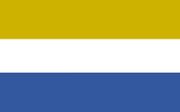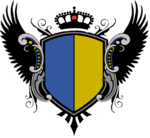Encessia: Difference between revisions
No edit summary |
No edit summary |
||
| Line 45: | Line 45: | ||
|Gini_year = 2019 | |Gini_year = 2019 | ||
|HDI_year = 2018 | |HDI_year = 2018 | ||
|HDI = 0. | |HDI = 0.902 | ||
|HDI_change = increase | |HDI_change = increase | ||
|currency = Enca | |currency = Enca | ||
Revision as of 03:00, 23 October 2020
Constitutional Kingdom of Encessia Vasíleio tis Enkésias | |
|---|---|
| Motto: "Paliá ópos i koiláda, ischyrí ópos to potámi tis." Old as the valley, strong as her river. | |
| Anthem: "Akolouthíste ti simaía, Yioí tis Enkésias" (Follow the flag, sons of Encessia) | |
| Capital | Lonue |
| Largest city | Chrysí Póli |
| Official languages | Encessi |
| Recognised regional languages | Arabic, Medovian, Lakkathan |
| Ethnic groups (2018)Encessian Census |
|
| Religion | Encessi Orthodox |
| Demonym(s) | Encessian, Encessi (Interchangable) |
| Government | Constitutional Monarchy |
• Basileus | Chrysis Aetos |
• Senate Minister | Georgios Palponesian |
| Legislature | Senate |
| Population | |
• 2018 census | 39.7 million |
• Density | 110/km2 (284.9/sq mi) |
| GDP (PPP) | 2019 estimate |
• Total | 1.5 trillion [ACU] |
• Per capita | 37,780 [ACU] |
| GDP (nominal) | estimate |
• Total | 0.8 trillion |
| Gini (2019) | 35.8 medium |
| HDI (2018) | very high |
| Currency | Enca |
| Time zone | UTC-2 (UTC) |
| Driving side | right |
| Calling code | +77 |
| Internet TLD | .eon |
Encessia, officially the Kingdom of Encessia, is a country consisting of core metropolitan Encessia and a single overseas province (Nísos Ble) southwest of ![]() Sofrezia. It is bordered by
Sofrezia. It is bordered by ![]() Gassasinia and
Gassasinia and ![]() Qazhshava to the North, borders drawn within the Azur Mountain range. It also extends south to the Chalkós river, and west to the historical Argus Line. Located in midwestern Thrismari.
Qazhshava to the North, borders drawn within the Azur Mountain range. It also extends south to the Chalkós river, and west to the historical Argus Line. Located in midwestern Thrismari.
By 2000 BC modern day Encessia had been a collection of small feudal provinces operated by local warlords, yet these provinces all belonging to the same culture. The first Encessians seemed to be descendants of nomadic tribes that came from across the Marmor Sea. Dialects of their languages slowly assimilating into the basis of the Encessi language today. The arid plains surrounded by mountain ranges to the north and the deep Chalkós river to the south allowed for protection and growth. Agrarian society forming the root of society. In approximately 700 BC a warlord by the name of Salomon began his conquest of the many states. Uniting the southern region of Encessia into one kingdom known as Gitonmis or 'land of us' in old Encessi. Salomon finished his conquest around 690 BC and established the first national ancestor of Encessia.
Gitonmis developed as a nation and a culture. Its people being mainly rural, farming society thanks to the appropriate land and circumstances. The city of Chrysí Póli (Golden City) ,located in the center of regional trade with foreign neighbors, grew in size and soon became the central core of Gitonmis. A hub of trade, innovation, and military power. However nearing the approach of 235 BC the kingdom suffered attacks from northern invaders and eventually fell into a state of civil chaos.
In 53 AD a powerful man by the name of Argus Dionedes marched on Chrysí Póli and established a central government under his dynasty, once more unifying the nation and giving it the name of Encessia, after the people that inhabited its lands. With a powerful and advanced army and science base he marched on surrounding neighbors and soon his kingdom became an empire. Pushing past the northern Azur Mountains and over the Chalkós river. And west to a line he proclaimed as 'the edge of Encessia'- a line that would be crossed. From 60 AD to 678 AD the Empire of Encessia was the dominant power in the region. Far-reaching and powerful. It was the center of commerce and advancement for over six hundred years. It adopted the Orthodox religion nationwide. An act that unified the people and led to the construction of a deep rooted religious society. The country scattered with churches and the works of the heavily endorsed artisan class.
By 692 AD the empire had been in decline after nomadic invasions, annexation and war with an enemy Arab empire from ![]() Gorabo, and a failing economy after the loss of vital waterways. By 700 AD Encessia was reduced to a small shadow state hugging the banks of the southern Chalkós River. A minor position it would remain in for years to come, fully occupied by enemy forces periodically once its power had fully diminished.
...
Gorabo, and a failing economy after the loss of vital waterways. By 700 AD Encessia was reduced to a small shadow state hugging the banks of the southern Chalkós River. A minor position it would remain in for years to come, fully occupied by enemy forces periodically once its power had fully diminished.
...

